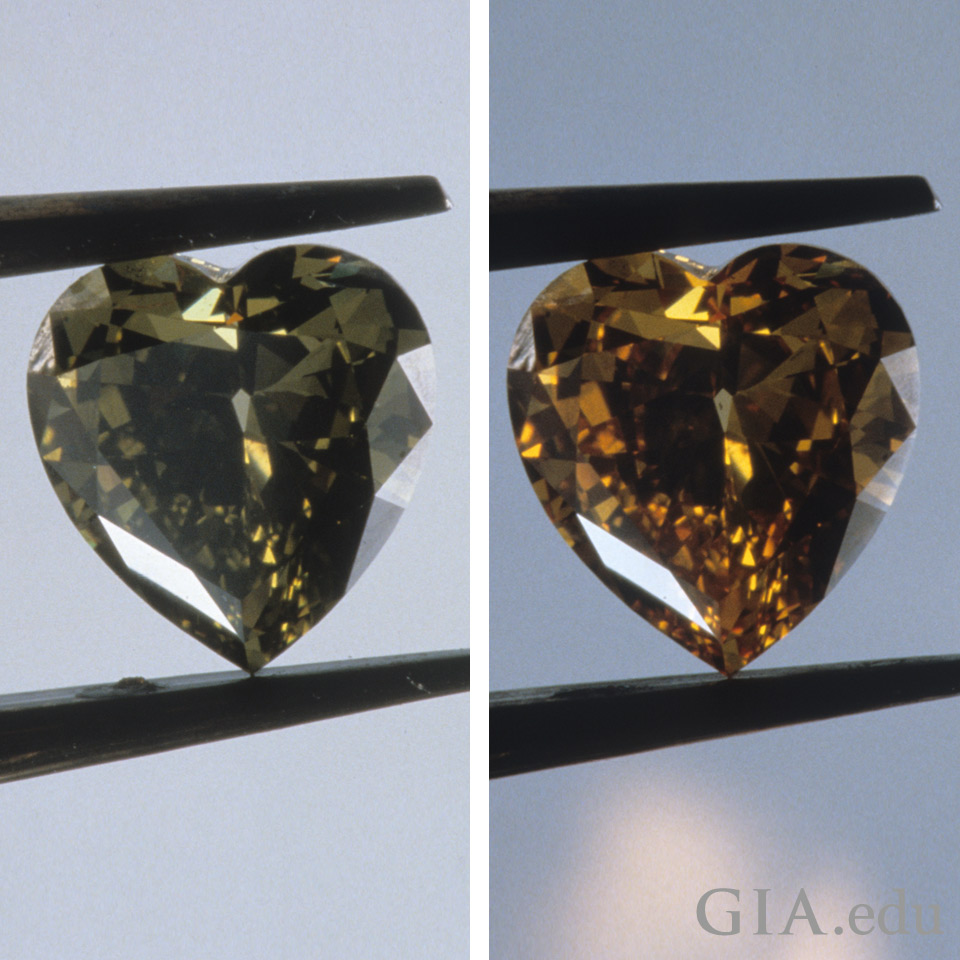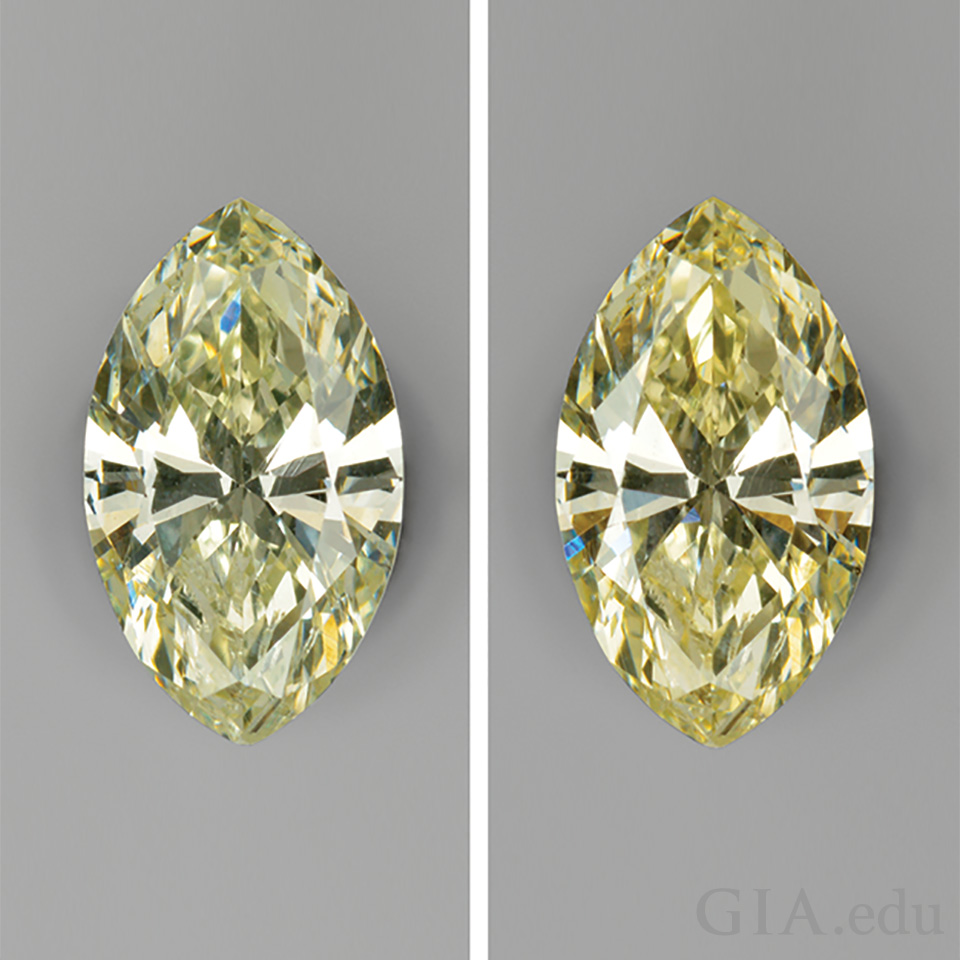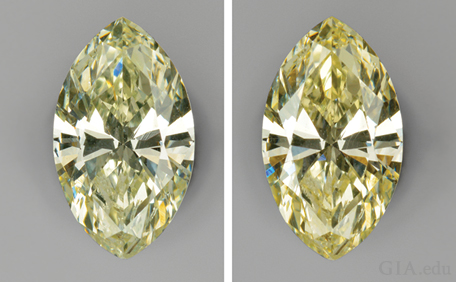Riddle us this: What temporarily changes color when it’s heated or kept in the dark? Is incredibly rare? And exceptionally valuable? If you said a chameleon diamond, you’re right! If you didn’t know the answer, don’t worry: read on to learn more about these mysterious and intriguing colored diamonds.
What Is a Chameleon Diamond?
Under normal conditions, the color of chameleon diamonds is typically grayish yellowish green to grayish greenish yellow. But, when heated up to 150° C (302° Fahrenheit) — or exposed to light after prolonged storage in the dark — a remarkable color change happens. Chameleon diamonds temporarily turn an intense brownish or orangy yellow to yellow color.
Some of these extraordinary colored diamonds have displayed color change for more than 15 minutes after being exposed to an ultraviolet lamp for just 60 seconds. Some emit a yellow glow, or phosphoresce, for up to an hour after the light source is turned off.

This 3.93 carat (ct) chameleon diamond exhibits a color change from greenish (left) to brownish yellow (right) when heated. Photo: Nicholas Del Re/GIA
Why Does a Chameleon Diamond Change Color?
What makes chameleon diamonds so mysterious is that the reason for their color change is unknown. Since chameleon diamonds change color when exposed to light or heat, there may be more than one mechanism at work causing the phenomena. Additionally, as they are so rare and valuable, researchers have found it difficult to procure samples to study.
How Rare Are Chameleon Diamonds?
It’s hard to say. Earliest mention of a color-change diamond dates back to 1866 by Georges Halphen, a Paris diamond merchant. The term ‘chameleon diamond,’ was first used to describe these color-change diamonds in the jewelry trade in 1943. One story from the early 1970s is about a customer who purchased a light yellow green diamond. Once he took it out of his jewelry box, he noticed that the diamond was now dark green. He returned the diamond for a refund. One can only imagine how many other chameleon diamonds camouflaged themselves from collectors.

This 0.31 ct Light greenish yellow marquise-cut diamond is shown at room temperature (left) and after being heated to 302° Fahrenheit (right). This is a temporary color change, and as the diamond cools, it reverts to its greenish yellow appearance. Photo: Robison McMurtry/GIA.
Grading Chameleon Diamonds
When a colored diamond is submitted to GIA for a GIA Colored Diamond Grading Report, the standard procedure is to record its visible absorption spectrum. To record the spectrum, the diamond is illuminated with light, and as it passes through the diamond, some of it is absorbed and some of it is transmitted. The transmitted portion is what we perceive to be the diamond’s color.
Chameleon diamonds have a distinctive color and absorption spectrum. When lab technicians see this spectrum, they look for color change behavior if the diamond is heated slightly or put in the dark. The laboratory will comment on the report that the diamond’s color changes temporarily when heated or when left in darkness for a period of time and is known in the trade as “chameleon.”
Add more color to your life by exploring the world of colored diamonds. There’s a rainbow out there waiting for you!
Custom Field: Array
